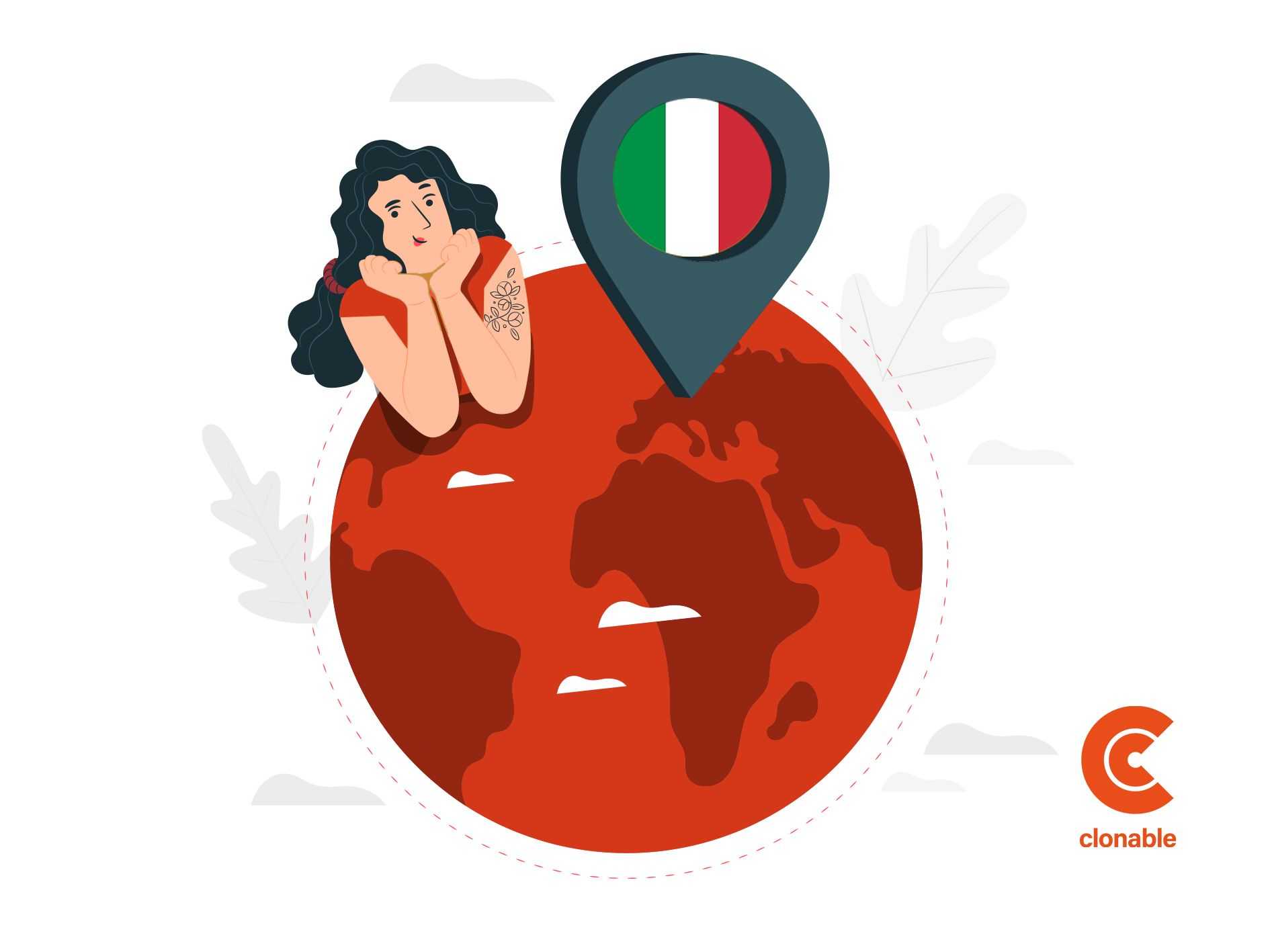Ecommerce in Italy
Italy is one of the fastest growing e-commerce markets in Europe. Because Italians started online shopping later, there is still plenty of room for new suppliers. With over 60 million inhabitants, it is an interesting market for Dutch entrepreneurs. In 2021, no less than 38% of Italian e-commerce will be purchases abroad. Delivery plays an important role for the Italians: they expect free delivery for expensive products and want clear information about the delivery costs before making a purchase. Take this into account when starting an Italian website or webshop.

Trust
Because Italian ecommerce is still relatively young, confidence is still low. Many consumers are still concerned about the safety of online shopping. Therefore, it is important to ensure that your Italian customers feel safe in your webshop. You can achieve this by, among other things:
- The right payment method
- Good customer service, in Italian of course
- Easy return process
- Italian text
In addition, it is good to know that an Italian consumer takes extensive time to think about a sale before they finally confirm it. They do this, for example, by placing items in their shopping basket, but not purchasing it (yet). It might therefore be useful to include a 'wish list' option on your site if you are expanding into Italy.
Top 3 foreign online purchases:
Top 3 product categories:
Clothing & shoes (31%)
Electronics (28%)
Home & garden (14%)
Top 3 favorite payment methods:
Digital wallet (Paypal, Allpay; 37%)
Payment card (29%)
Credit card (24%)
Figures: Crossborder e-commerce shopper research conducted by the International Postal Cooperation (IPC)
The rise of Italian e-commerce: opportunities for crossborder sellers
Italy is Europe's third largest economy after Germany and France, has about 59 million inhabitants and is a founding member of the European Union, OECD, G7 and G8. The country is also the largest market for luxury goods in Europe, which is perhaps no surprise since fashion brands such as Armani, Versace, Prada and Gucci come from Italy, as do car brands Ferrari, Buggati and Lamborghini. The country is developing quite rapidly, but there are many economic differences between southern Italy and the north, with the north being richer.
In recent years, Italy has seen a surge in e-commerce activity, with companies of all sizes turning to online sales to reach new customers. This trend is driven by a number of factors, including the growing number of Internet users in the country and the increasing popularity of mobile shopping. By January 2022, 76.3% of the population (ages 2 and up) had access to the Internet (up 1.4% from last year).
As a result of this shift to online shopping, there are now many opportunities for cross-border sellers looking to expand their operations into Italy. The country's large population and high levels of Internet and mobile penetration make it an attractive market for e-commerce companies.
Sales in the eCommerce market are expected to reach 55 billion euros in 2022 and grow by about 16.5% each year to an expected market volume of 87 billion euros in 2025.
In the eCommerce market, the number of users is expected to reach 40.4 million by 2025.
What to consider when doing business in Italy?
There are a number of considerations companies must take into account when selling in Italy, such as the country's VAT rules and delivery and return rules. However, with careful planning and execution, selling in Italy can be a very successful venture. If you are considering expanding your e-commerce business into Italy, here are some tips to get you started:
1. Research the Italian e-commerce market
Before you start selling in Italy, it is important to research the Italian e-commerce market. This will help you understand the size and scope of the opportunity, as well as the key players in the market.
2. Understand the VAT rules.
As an e-commerce business, you need to be aware of the VAT rules and regulations in Italy. VAT is currently set at 22% in Italy, and businesses must register for a VAT number to sell online.
3. Choose the right platform
There are a number of different e-commerce platforms you can use to sell in Italy. It is important to choose a platform that is reliable and user-friendly, and one that offers good customer support.
4. Translate/localize your website
When selling in a new market, it is important to localize your website. This means translating your website into the local language and currency. You also need to ensure that your website complies with local regulations. You can easily start translation through Clonable, where the personalization options in the dashboard allow you to personalize and perfect everything.
5. Find a reliable shipping partner
One of the most important considerations in Italy is finding a reliable shipping partner. This is especially important if you sell valuable items because you need to make sure your products are delivered safely and on time.
6. Promote your business
Once you have set up your e-commerce business, you need to start promoting it. There are a number of ways to do this, including through online advertising, social media and PR.
Among marketing activities, Italy has the highest investment in SEO. This is due in part to the fact that competition in Italy is still relatively low compared to the other major European countries such as Germany and the United Kingdom, but also compared to the Netherlands, for example.
7. Provide excellent customer service
Providing excellent customer service is essential for any e-commerce business. This is especially true when selling into a new market, as you need to build trust with your Italian customers.





